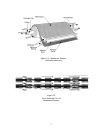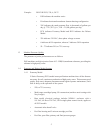
Some operating definitions are provided to help you further understand your machine:
Permeate Rate [Product Water Rate (Q
p
)] is the flow rate of purified water which has
passed through the membrane element and out of the membrane element housing;
expressed in gal/min (gpm) or gal/hr (gph) [in metric, liter/min (Lpm) or cubic
meters/hour (m
3
/h)]. Specified permeate rates are normally at 77ºF (25ºC).
Concentrate Rate [Waste Water Rate (Q
c
)] is the flow rate of water containing reject-
ed solids to drain in gpm or gph (Lpm or m
3
/h).
Feed Rate (Q
f
) is the flow rate of incoming water in gpm or gph (Lpm or m
3
/h).
Feedwater rate equals permeate rate plus concentrate rate.
Recovery equals permeate rate divided by feed rate and is expressed as a percentage.
For example, 33% recovery means that out of a given feed rate, 33% is produced as
purified water (permeate).
Concentration equals the Total Dissolved Solids (TDS) concentration of a solution
expressed as milligrams per liter (mg/L) or conductivity (microSiemens/cm).
C
f
= Feed Concentration
C
p
= Permeate Concentration
C
c
= Concentrate Concentration
C
avg
= Average Concentration in Machine
Salt (Ionic) Rejection equals the percent of dissolved salt rejected by the membrane
element, calculated from an average concentration over the membrane.
Salt (Ionic) Passage equals (100% - rejection) or the percent of dissolved salts passed
through the membrane element.
An example of how to calculate salt rejection and recovery is given below:
Figure 1.4
Principles of Operation
3


















